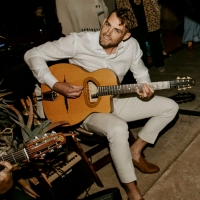DjangoBooks.com
Welcome to our Community!
Categories
- 20K All Categories
- 1.1K General
- 476 Welcome
- 59 Archtop Eddy's Corner
- 146 CD, DVD, and Concert Reviews
- 385 FAQ
- 26 Gypsy Jazz Italia
- 27 Photos
- 202 Gypsy Picking
- 21 Unaccompanied Django
- 15 Pearl Django Play-Along Vol.1
- 17 Gypsy Fire
- 45 Gypsy Rhythm
- 1.4K Gypsy Jazz University - Get Educated
- 131 Gypsy Jazz 101
- 227 Repertoire
- 218 History
- 708 Technique
- 51 Licks and Patterns
- 6 Daniel Givone Manouche Guitare Method Users Group
- 20 Eddie Lang Club
- 1.3K Gypsy Jazz Gear
- 802 Guitars, Strings, Picks, Amps, Pickups and Other Accessories
- 459 Classifieds
- 49 Recording
- 62 Other Instruments
- 18 Violin
- 5 Mandolin
- 22 Accordion
- 7 Bass
- 10 Woodwinds
- 347 Gypsy Jazz Events
- 143 North America
- 109 Europe
- 95 International
In this Discussion
Who's Online (0)
Comping Using 4 note "Drop-2" Chords
I have been going through the comping section (by far the most fun section!) and I have been thinking about your section on chord scales. You write that Django often used 3 and 4 note voicings on the upper strings. The three note voicings seem to be Drop 2 voicings where you omit the third note while the full 4 note voicings are just standard Drop 2 voicings.
Is there a reason to prefer the 3 note or 4 note over the other? What context would you play either one? If there is no real preference of one over the other, I think I'll just play the 4 note drop 2s that Berklee drilled into me while I start to work on the 3 note voicings.
I don't know how common the "Drop" terminology is, so here is a brief explanation.
A Cmaj6 in a "closed position" would be (top to bottom)
A
G
E
C
A "drop two" voicing is where you take the second highest note and drop it down an octave making:
A
E
C
G
Drop 3 would be:
A
G
C
E
Drop 2 and 4 would be
A
E
G
C
I can answer any questions on Drop voicings if I haven't been clear.
Thanks,
Chris
Is there a reason to prefer the 3 note or 4 note over the other? What context would you play either one? If there is no real preference of one over the other, I think I'll just play the 4 note drop 2s that Berklee drilled into me while I start to work on the 3 note voicings.
I don't know how common the "Drop" terminology is, so here is a brief explanation.
A Cmaj6 in a "closed position" would be (top to bottom)
A
G
E
C
A "drop two" voicing is where you take the second highest note and drop it down an octave making:
A
E
C
G
Drop 3 would be:
A
G
C
E
Drop 2 and 4 would be
A
E
G
C
I can answer any questions on Drop voicings if I haven't been clear.
Thanks,
Chris
Work on the <A HREF="http://www.petersonmusic.com/wiki">Gypsy Jazz Fake Book</A>.No finale experience necessary.










Comments
Good question!
The use of the 3 and 4 note voicings is all about context. Unfortunately the transcriptions in Vol.1 don't really have any examples of three note voicings in use other then m.91-92 of Out of Nowhere. The transcriptions for the vol.2, and vol.3 have more three note voicing stuff. Especially in the Blues and Nuages transcriptions. Also, these voicings are used extensively in the Unaccompanied Django book.
One thing I've learned from doing these books is that Django's was a master of making very sophisticated music out something that is very simple. The less notes you use in a chord, the more ways that chord can function. So when you're using triads, they're physically simple, but can be musically very sophisticated.
But in general, I'd say the 4 note voicings are used more for comping then 3 note voicings. So if you only play rhythm, knowledge of the three note voicings won't be as useful. However, the three note voicings are the basis for endless variations of sweep picking tricks (like example 3.2 in Gypsy Picking), Django's solo pieces, and some comping ideas
A lot of it just about efficiency....if you're doing some fast comping stuff where your moving chords every beat, or even faster, you'll need to use the efficient voicings, be they 3 or 4. Often it's a mix of both.
'm
I must say that I am happy that something from my past musical experiences will help me with Gypsy Jazz. I had to relearn how to pick, move away from my flat four big band roots and learn to play with my thumb. Finally there is something that I can transfer over easily!
As for those 3 note voicings used in the Unaccompanied Django book, looks like I'll have to pick that book up as well....
Chris